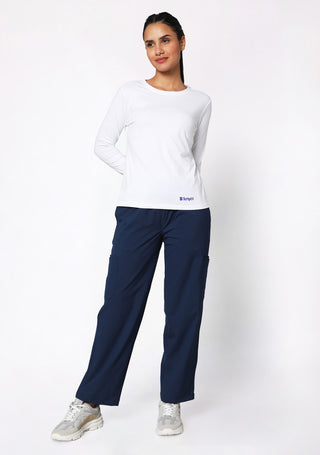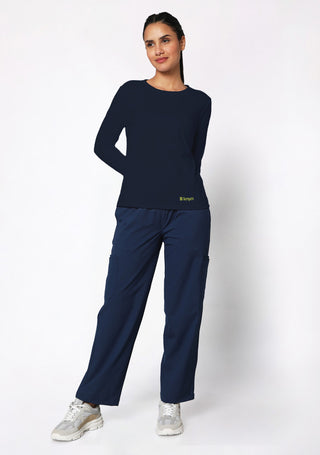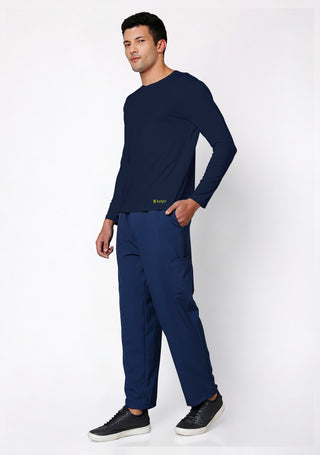In the dynamic world of healthcare, nurses stand as the backbone of patient care. From monitoring vitals to managing medications and offering emotional support, nurses juggle a range of responsibilities every day. But there's one tool they almost always carry around their necks—the stethoscope. So, do nurses really use stethoscopes, or is it just a stereotype popularized by media? Let's break it down in detail.
Ready to explore our amazing scrubs collection? Browse the best here
Why Nurses Use Stethoscopes?: More Than Just a Symbol
Yes, nurses do use stethoscopes, and not just occasionally—they use them every single day. A stethoscope is not merely a piece of equipment; it’s a vital extension of a nurse’s clinical intuition and skillset. Whether it's listening to the faint crackles in a patient's lungs or monitoring blood pressure, the stethoscope plays a key role in decision-making and patient assessment.
In hospitals, clinics, outpatient departments, and emergency rooms, the stethoscope is often the first point of contact between a nurse and their patient—a tool that helps them tune into what's going on inside the body.
The Key Roles Stethoscopes Play in Nursing
1. Auscultation of Heart and Lung Sounds
Nurses use stethoscopes to listen to:
-
Heart sounds: Identify murmurs, irregular rhythms, and bruits.
-
Lung sounds: Detect wheezing, crackles, and signs of fluid accumulation.
These sounds offer early warning signs of complications in patients with cardiac or respiratory conditions.
2. Blood Pressure Monitoring
Every time a nurse checks your BP manually using a sphygmomanometer, they rely on their stethoscope to detect Korotkoff sounds that mark systolic and diastolic pressures.
3. Bowel Sound Assessment
In post-operative care or cases of gastrointestinal distress, nurses listen to bowel sounds using a stethoscope to detect abnormalities such as:
- Hyperactive bowel sounds
- Hypoactive or absent sounds
- Gurgling or high-pitched sounds indicative of obstruction
4. Peripheral Circulatory Assessment
By auscultating over arteries, nurses can detect turbulent blood flow or bruits which may indicate vascular disease or narrowing.
5. Detecting Abnormalities Early
From neonates to the elderly, stethoscopes help nurses catch early signs of deterioration. Subtle changes in lung or heart sounds often precede a full-blown crisis.
Types of Stethoscopes Used by Nurses
While all stethoscopes serve the same purpose—amplifying internal body sounds—nurses may choose different types based on their area of practice:
1. Acoustic Stethoscopes
The most commonly used and traditional type, offering reliable auscultation for heart, lung, and bowel sounds.
2. Dual-Head Stethoscopes
Equipped with a diaphragm and a bell. The bell picks up low-frequency sounds, while the diaphragm focuses on higher-frequency sounds.
3. Electronic Stethoscopes
Used in high-noise environments like emergency departments or ambulances. These stethoscopes amplify internal sounds electronically for better clarity.
4. Pediatric and Neonatal Stethoscopes
Designed for smaller chest cavities, ensuring nurses can listen to delicate sounds in children and infants.
5. Cardiology Stethoscopes
Offer enhanced acoustic sensitivity. Some experienced nurses in critical care or cardiology units prefer these for their detailed sound resolution.
Nurse vs. Doctor: Is There a Difference in Stethoscope Use?
The basic function of the stethoscope remains the same, but nurses and doctors may use it differently based on their role:
-
Nurses: Prioritize durability, ease of use, and comfort for long-term wear during extended shifts. They often use their stethoscope to repeatedly monitor vitals, especially in high-turnover settings like wards and ICUs.
-
Doctors: Often look for enhanced acoustic precision or specialty features, particularly for diagnostic purposes across multiple body systems.
The designs may vary, but both professions consider the stethoscope indispensable.
Click here to Explore All Women's Scrubs and discover our complete collection of comfortable and stylish medical apparel
Do All Nurses Use Stethoscopes?
Absolutely. Regardless of specialization, almost all nurses—from ICU to general ward, emergency to pediatrics—use a stethoscope. Even nursing students are required to learn auscultation techniques during their clinical training.
How Nurses Are Trained to Use Stethoscopes?
Nursing students are taught the skill of auscultation during early clinical rotations. Training includes:
-
Heart sound identification
-
Lung sound differentiation
-
Manual BP measurement
-
Abdominal auscultation techniques
This is not just theoretical—students practice on mannequins and real patients under supervision.
Role of Stethoscopes in Specialized Nursing Fields
-
ICU Nurses: Monitor multiple systems simultaneously—heart, lungs, abdomen.
-
Pediatric Nurses: Use pediatric stethoscopes to detect subtle signs in children.
-
Cardiac Care Nurses: Need advanced auscultation skills and may use cardiology-grade tools.
-
Emergency Room Nurses: Require fast, accurate assessment to prioritize treatment.
-
Community Health Nurses: Use stethoscopes during field visits and outreach programs.
Choosing the Right Stethoscope: What Nurses Look For
-
Weight and Comfort: Lightweight models that can be worn comfortably for 12-hour shifts.
-
Durability: Made from materials that last and withstand daily use.
-
Ease of Cleaning: Especially important in infection-control areas.
-
Sound Quality: Clear auscultation in different body types and conditions.
-
Design and Aesthetics: Color preferences to match their medical scrubs or lab coats from Knya.
Final Thoughts: Stethoscopes Empower Nurses Every Day
A stethoscope isn’t just a device—it’s a lifeline between a nurse and their patient. It allows nurses to hear what’s often invisible—irregular rhythms, shallow breaths, silent bowels—and respond promptly. It builds confidence in their assessments and enhances the quality of care they deliver.
At Knya, we believe every nurse deserves comfort, precision, and performance—in both tools and apparel. Just as your stethoscope empowers your clinical skills, our thoughtfully designed medical scrubs, lab coats, and underscrubs empower your confidence and presence in every shift.















